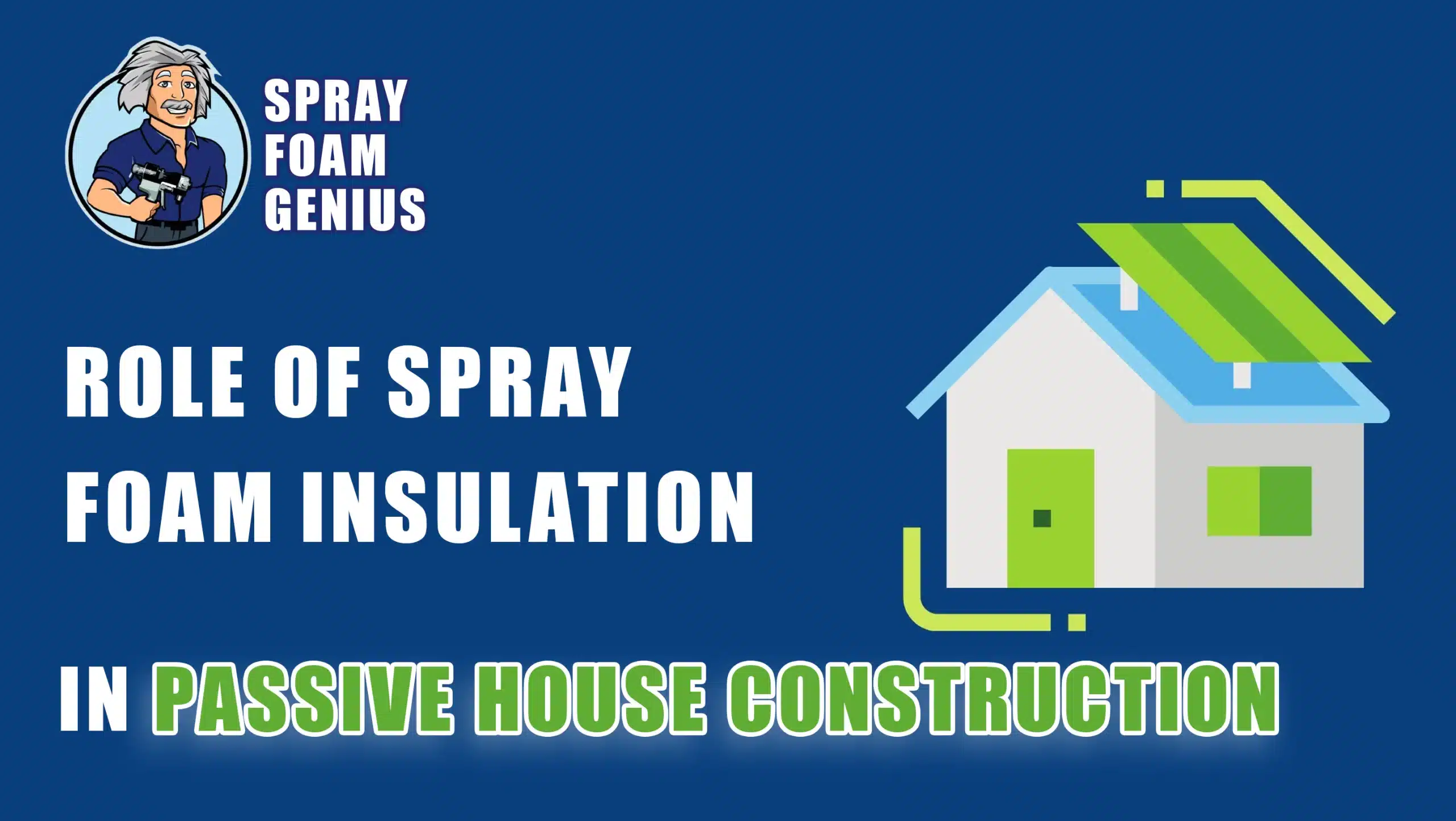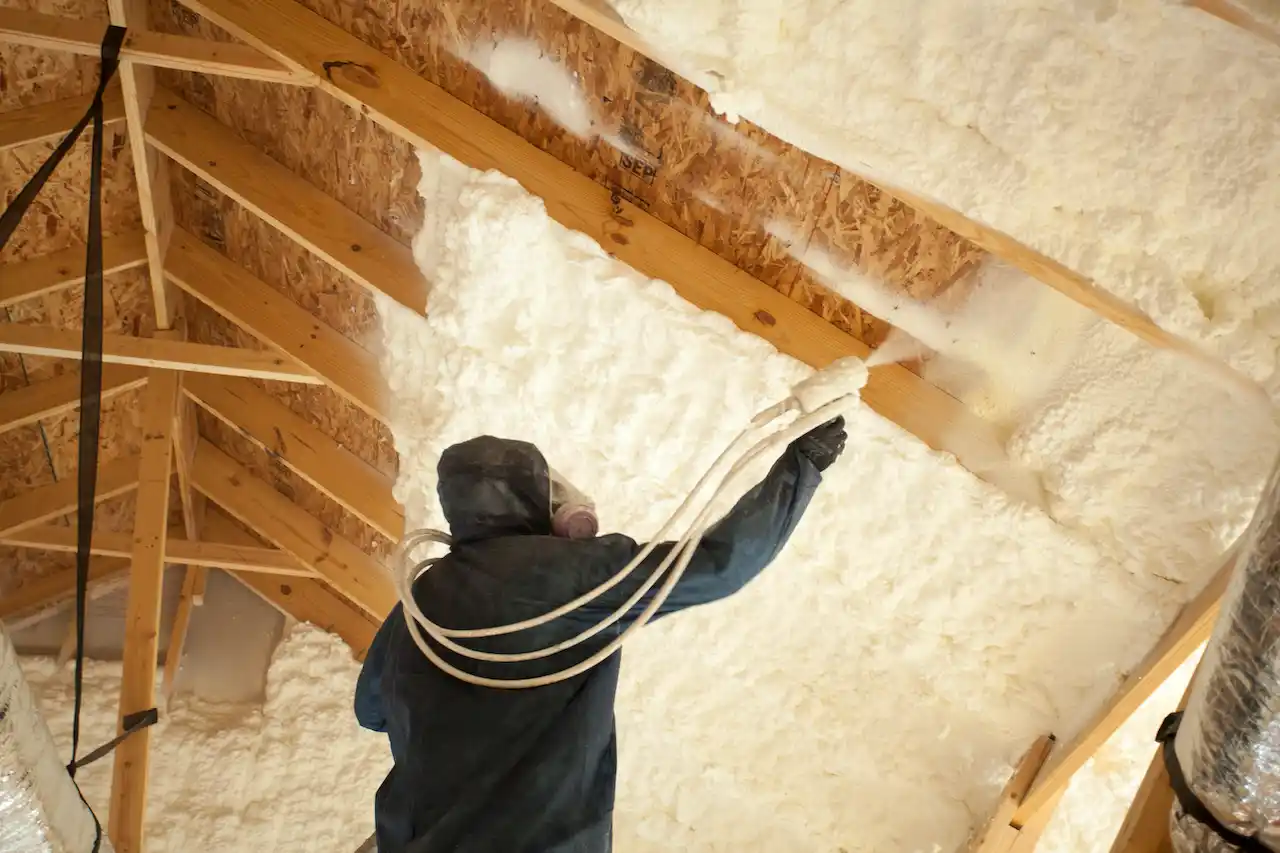
In the ever-evolving world of sustainable construction, Passive House (or Passivhaus) has become a gold standard for energy-efficient buildings. This rigorous, voluntary standard for energy efficiency significantly reduces a building’s ecological footprint, aiming to create structures that require minimal energy for heating and cooling. As a spray foam insulation contractor, understanding the crucial role that insulation plays in Passive House construction is essential for staying ahead in the industry.
At Spray Foam Genius Marketing, we specialize in empowering spray foam insulation contractors across the USA and Canada to optimize their online presence and generate quality leads. This in-depth guide will explore the role of spray foam insulation in Passive House construction, offering valuable insights to help you align your services with the sustainability goals of this expanding market.
What is a Passive House?
Before we delve into the specifics of spray foam insulation, it’s important to fully grasp what a Passive House entails. Originating in Germany, the Passive House standard is recognized globally for its stringent requirements that focus on reducing energy consumption while ensuring a comfortable indoor environment. The primary objective of Passive House construction is to minimize the need for mechanical heating and cooling systems by optimizing the building’s thermal envelope performance.
Key Characteristics of a Passive House
- High Insulation Levels: Ensuring that the building envelope has minimal heat loss or gain.
- Airtightness: Creating a building envelope that prevents drafts and energy leakage.
- Thermal Bridge-Free Design: Eliminating weak points in the structure where heat can escape.
- High-Performance Windows: Often triple-glazed to enhance thermal insulation.
- Mechanical Ventilation with Heat Recovery (MVHR): Efficiently managing indoor air quality and temperature through controlled ventilation.
Why Spray Foam Insulation is Ideal for Passive Houses
Spray foam insulation is an ideal material for Passive House construction due to its unique properties that align perfectly with the stringent requirements of this building standard.
1. Superior Thermal Performance
One of the core principles of Passive House construction is maintaining a consistent indoor temperature with minimal energy use. Spray foam insulation offers exceptional thermal performance, with closed-cell spray foam achieving R-values as high as 6 to 7 per inch. This high R-value means that spray foam insulation can significantly reduce heat transfer, helping maintain the desired indoor temperature and minimizing the need for additional heating or cooling.
2. Exceptional Airtightness
Airtightness is another critical requirement for Passive House construction. Air leakage can lead to significant energy losses, undermining the building’s energy efficiency. Spray foam insulation excels in creating airtight structures. When applied, the foam expands to fill gaps, cracks, and crevices that traditional insulation materials might miss, creating a continuous air barrier. This superior air-sealing capability is essential for achieving the airtightness required by Passive House standards.
3. Moisture Control and Durability
Managing moisture is crucial in any building, but it becomes even more important in Passive House construction due to the airtight nature of these structures. Closed-cell spray foam insulation acts not only as an excellent insulator but also as a vapor barrier, preventing moisture from penetrating the building envelope. This dual functionality helps prevent issues like condensation and mold, ensuring the long-term effectiveness of the insulation and contributing to the building’s durability and sustainability.
4. Versatility in Application
One of the standout features of spray foam insulation is its versatility. It can be applied to various parts of a building, including walls, roofs, attics, and foundations, making it an excellent choice for the complex demands of Passive House construction. Whether insulating a curved roofline or sealing the perimeter of a window, spray foam adapts to the shape and surface, ensuring a seamless application that maximizes energy efficiency.
Meeting Passive House Standards with Spray Foam Insulation

For spray foam insulation contractors, understanding how to meet the stringent Passive House requirements is critical to success in this market. Below are key considerations to ensure that your insulation projects align with Passive House standards.
1. Comprehensive Planning and Design
Passive House construction demands meticulous planning, particularly regarding the building’s thermal envelope. As a contractor, it’s crucial to collaborate with architects and builders early in the design phase to identify areas where spray foam insulation can be most effective. This early collaboration ensures that the insulation strategy is fully integrated into the overall design, optimizing the building’s energy performance and helping to meet Passive House certification requirements.
2. Quality Installation
Even the highest-quality insulation materials can underperform if not installed correctly. Ensuring that your team is well-trained in Passive House techniques is essential. This training should cover the importance of achieving consistent thickness, avoiding thermal bridges, and ensuring complete coverage in all critical areas. Implementing rigorous quality control measures during installation will help guarantee that the finished project meets or exceeds Passive House standards.
3. Air Tightness Testing
After insulation installation, air tightness testing (commonly known as a blower door test) is necessary to confirm that the building meets the required air leakage rates for Passive House certification. Spray foam insulation’s superior air-sealing properties can significantly contribute to achieving the low air leakage rates required. As a contractor, it’s important to be prepared to work closely with testing professionals to fine-tune the building’s airtightness if necessary.
4. Long-Term Performance Monitoring
Passive House construction focuses on long-term energy performance. Once a building is complete, monitoring its energy use and indoor climate over time can provide valuable data that reinforces the benefits of spray foam insulation. This data can also serve as a powerful marketing tool, showcasing the real-world effectiveness of your insulation work in Passive House projects and helping to build trust with potential clients.
The Business Opportunity for Spray Foam Contractors
The growing demand for sustainable building practices presents a significant opportunity for spray foam insulation contractors. By aligning your services with the Passive House standard, you can differentiate your business in a competitive market and appeal to a rapidly expanding segment of environmentally conscious consumers.
1. Expanding Market Reach
Passive House construction is gaining traction not only among individual homeowners but also in commercial and multi-family building projects. By positioning your business as an expert in Passive House insulation, you can expand your market reach to include a broader range of projects, from residential homes to large-scale commercial developments. This expansion can lead to increased business opportunities and higher-value contracts.
2. Enhancing Your Reputation
Building a reputation as a Passive House expert can significantly enhance your credibility and attract more clients. To build this reputation, consider creating case studies of successful Passive House projects, collecting testimonials from satisfied clients, and obtaining certifications that highlight your expertise in this area. These efforts can help establish your business as a trusted authority in the Passive House market.
3. Leveraging Sustainability Trends
Sustainability is no longer a niche concern; it’s a driving force in the construction industry. By focusing on Passive House projects, you position your business at the forefront of this movement, offering services that are not only high-quality but also environmentally responsible. This alignment can be a powerful selling point in your marketing efforts, especially when combined with effective SEO strategies, Google My Business optimization, and lead generation tactics provided by Spray Foam Genius Marketing.
4. Partnering with Industry Leaders
The Passive House standard often involves collaboration with architects, builders, and other industry professionals who are committed to sustainability. By specializing in Passive House projects, you can build partnerships with these industry leaders, opening doors to new opportunities and enhancing your professional network. These partnerships can lead to more referrals, joint ventures, and a stronger presence in the sustainable construction market.
Practical Tips for Implementing Spray Foam Insulation in Passive House Projects
To successfully implement spray foam insulation in Passive House projects, contractors need to focus on several practical aspects that ensure the effectiveness of the insulation and the overall energy performance of the building.
1. Selecting the Right Spray Foam
Choosing the correct spray foam type is crucial. Closed-cell spray foam is generally preferred for its high R-value and vapor barrier properties, which are vital for Passive House standards. Open-cell spray foam may be used where breathability is needed. Assess each project’s specific needs to select the most suitable product.
2. Ensuring Proper Ventilation
Effective ventilation is essential to maintain indoor air quality and prevent moisture buildup. In Passive House construction, Mechanical Ventilation with Heat Recovery (MVHR) systems are commonly used. Collaborate with HVAC professionals to ensure proper integration with your insulation work.
3. Addressing Thermal Bridging
Thermal bridging can undermine energy efficiency by allowing heat to bypass the insulation. Spray foam’s ability to expand and conform helps reduce thermal bridges. Focus on critical areas such as corners and junctions to minimize heat loss.
4. Collaborating with Other Trades
Successful Passive House projects require teamwork between contractors, architects, builders, and HVAC specialists. Ensure effective communication and coordination with these professionals to align your insulation installation with the project’s energy performance goals.
5. Continuous Education and Training
Stay updated with the latest materials, techniques, and technologies in Passive House construction. Invest in ongoing education and training to keep your skills current and maintain a competitive edge in the industry.
Ready to Elevate Your Spray Foam Business?
At Spray Foam Genius Marketing, we specialize in helping spray foam insulation contractors thrive in a competitive market. Whether you’re looking to break into the Passive House sector or enhance your overall online presence, we offer tailored solutions that deliver results. Our services include SEO, Google My Business optimization, lead generation, and more, all designed to help your business grow and succeed.
If you’re ready to take your spray foam insulation business to the next level, contact us today. Call us at 877-840-FOAM for USA and 844-741-FOAM for Canada visit our website at sprayfoamgeniusmarketing.com, or email us at [email protected] to get started.
Let’s work together to make your business a leader in the Passive House market!
- 5 Google My Business Hacks to Double Your Leads for Spray Foam Insulation Contractors - January 14, 2025
- Why Spray Foam Contractors Cannot Ignore Reputation Management in 2025 - January 13, 2025
- Local SEO Secrets Every Spray Foam Contractor Must Know to Win in 2025 - January 13, 2025

